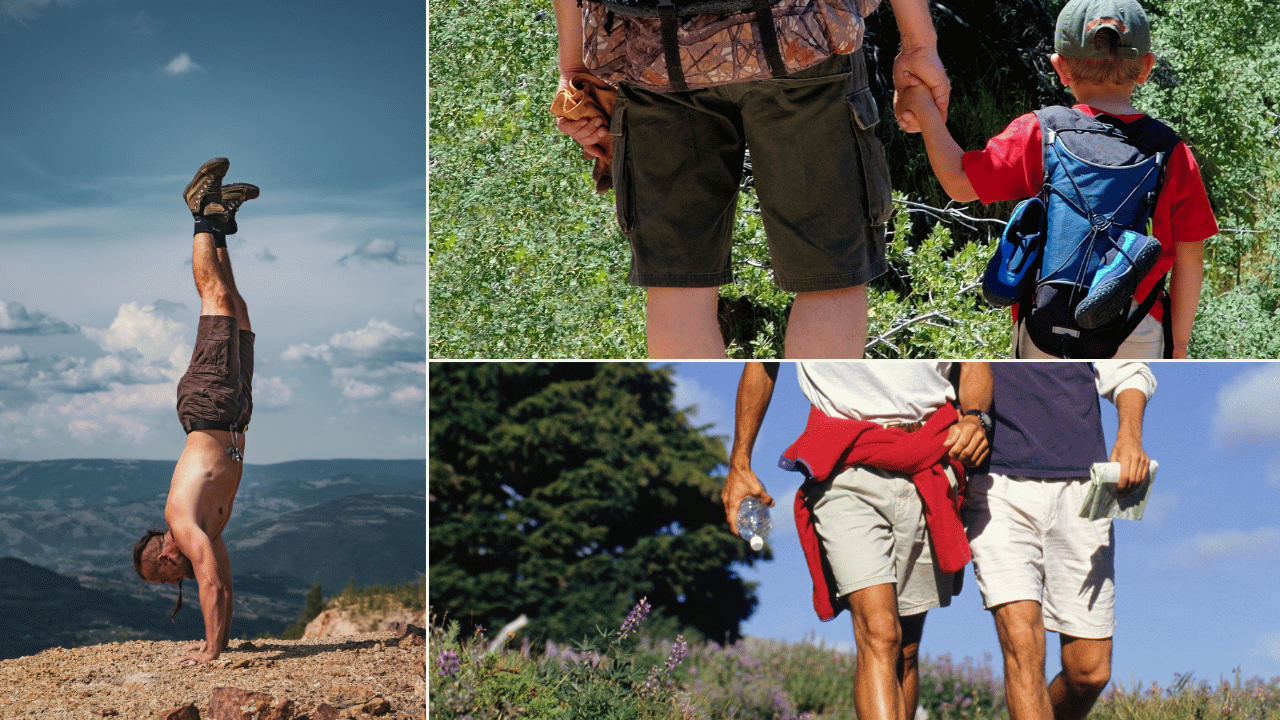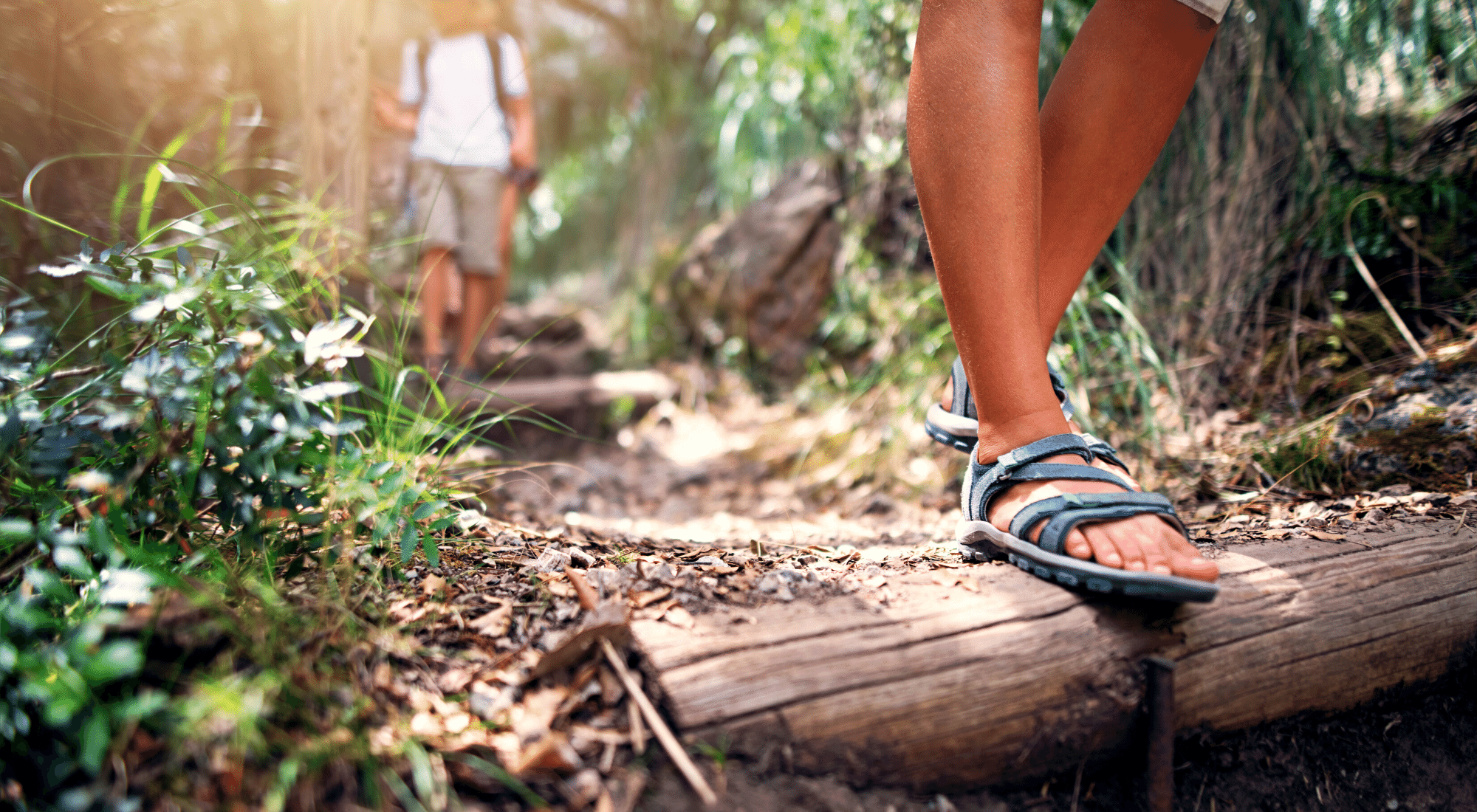The Best Reason to Buy Men’s Hiking Shoes from Amazon 🥾
Learn why Amazon is the best place to buy men’s hiking shoes, how to pick the right pair, and tips for fit, comfort, and durability.
Finding the right men’s hiking shoes should not feel like a trek before the trek. You want a pair that fits your foot shape, matches your trail conditions, and holds up over miles of rock, mud, and roots.
Amazon makes that process faster and smarter with huge selection, deep reviews, competitive pricing, and Prime delivery that gets you on the trail sooner. In this guide, you will learn what truly matters in hiking footwear, why men’s and women’s models differ, and how to use Amazon’s tools to choose the best shoes for your feet and your terrain.
Key takeaways:
- Use Amazon’s size charts, user photos, and filter tools to dial in fit and features before you buy
- Choose materials and tread that match your terrain, from hot and dry to wet and technical
- Compare men’s and women’s design differences so you can pick what actually fits your foot shape
- Follow the fit and care tips below to reduce blisters, boost traction, and extend shoe life

Journey Fanatics may earn a commission from qualifying purchases, but we promise the prices are still the same for you!
Why Buy Men’s Hiking Shoes on Amazon
Amazon’s biggest advantage is confidence at checkout. Here is what stands out:
- Massive selection across performance tiers and budgets, including top brands like Salomon, Merrell, and Keen
- Verified reviews and Q&A that reveal real trail performance, sizing quirks, and durability over time
- Fast shipping for last minute trips if you use Prime
- Easy returns that remove the risk from testing sizes and fits at home
- Rich product pages with size guides, comparison charts, and user photos that show tread depth, toe caps, and upper materials
When you combine selection with social proof and simple returns, you can test and choose hiking footwear with less guesswork. That is the best reason to shop for men’s hiking shoes on Amazon.
The Anatomy of Great Hiking Shoes
Understanding core features helps you filter smarter and avoid costly returns.
- Waterproof and breathable membrane: Blocks water while venting sweat so your feet stay dry on wet trails and creek crossings
- Vibram outsole: Trusted rubber compound and lug design that grips uneven surfaces, roots, and slick rock
- Toe cap and wide toe box: Shields from stubs and allows natural toe splay to reduce blisters and hot spots
- Firm midsole with EVA foam: Adds underfoot support and stability for heavy packs and technical terrain
- Mesh upper: Boosts airflow for hot weather hikes and quick dry times after stream splashes
- Ankle protection: Higher collars increase stability on uneven ground and protect against rolls
- Recycled materials: More brands are blending sustainability with performance so you can feel good about your purchase
Why Men’s and Women’s Hiking Shoes Differ
Fit is not a marketing gimmick. Design differences address biomechanics and common foot shapes.
Fit and Foot Shape
Men typically have a wider forefoot and roomier toe box needs. Women tend to have a narrower heel and higher arches. That is why women’s models often feature a snug heel cup and enhanced arch support, while many men’s models offer broader forefoot space and more volume. If you have narrower feet, consider lacing tricks or trying a women’s version for a better lock at the heel. If you have wider feet, look for models noted as wide or brands that run generous in the forefoot.
- Heel cup design: Prevents heel lift and reduces friction on uneven ground
- Arch support: Keeps your foot aligned on long days with elevation gain
- Wide feet or high volume feet: Look for wide toe boxes from brands known for roomier lasts
- Narrow feet or low volume feet: Seek customizable lacing and consider adding supportive insoles
- Hot spots and blisters: Smooth mesh linings and strategic padding help prevent irritation

Weight and Materials
Weight adds up with every step. Men’s boots that target rugged terrain often use thicker materials for stability and protection, which increases weight. Lightweight options favor speed and comfort on less technical trails. Even a few ounces can matter on long climbs.
- Trail running shoes: Great for lighter loads and dry conditions thanks to flexible, breathable builds. See these ideas if you also run between hikes: 8 Best Cushioned Running Shoes for a Comfortable Run
- Hiking boots: Best when you carry heavy packs, cross slick rock, or need ankle support
Cushioning, Support, and Waterproofing
Cushion placement varies to match common pressure points. Men’s models often emphasize structure and ankle support. Waterproof membranes like Gore-Tex keep water out while venting, and deeper lugs on some men’s models boost traction in mud and on wet rock. For fluctuating weather, a waterproof shoe with a ventilated upper and grippy outsole is a smart choice.
Choose Shoes Based on Trail Type
Match the shoe to the miles you hike and the terrain you face.
Casual Day Hikes
For scenic walks and mellow trails, breathable hiking shoes, trail runners, or walking shoes work well. These are lightweight, dry fast, and provide solid traction on dirt paths. If you hike in heat, look for mesh uppers and airy linings. For colder days, consider a lightly insulated option with a grippy outsole. It can also help to test models similar to your favorite warm weather shoes, like these lightweight picks.
Slippery Rocks and Mud
Pick hiking boots with a waterproof membrane and aggressive outsoles. Deep lugs shed mud and grip wet rock. Moisture wicking linings keep feet dry from the inside out. These features are valuable in rainy regions and river crossings.
Rugged, Rocky Trails
Technical trails call for a protective toe cap, firm midsole, stable platform, and ankle collars. Vibram outsoles shine here. A supportive shoe that fits like a glove reduces foot fatigue and helps you stay surefooted with a heavy pack.
Long Distance Hikes
Look for more support and cushioning underfoot with a stable midsole. A waterproof version helps when the forecast is mixed. Many hikers reduce blisters on long days by wearing two pairs of socks and rotating shoes during multi day trips.

How to Use Amazon to Pick the Right Men’s Hiking Shoes
Turn Amazon’s product pages into your personal fitting room.
- Read reviews by terrain: Filter for terms like mud, slick rock, scree, hot weather, or long distance to find feedback that matches your use case
- Check size notes: Look for comments about fit, whether a model runs large or small, and how it compares to common sneakers or prior versions
- Scan user photos: Zoom in on lug depth, toe cap coverage, and upper material to assess durability and breathability
- Compare similar models: Use the comparison chart to check weight, membrane type, and drop height
- Use Prime Wardrobe or easy returns: Order two sizes to test at home with your hiking socks and orthotics so you can choose the best fit risk free
Fine Tuning Fit at Home
Dial in comfort before you hit the trail.
- Wear your hiking socks: Test with the same thickness you plan to use outside
- Heel lock lacing: Use a runner’s loop at the top eyelets to reduce heel slip on descents
- Toe room: Leave a thumb’s width at the front to protect toes on downhill sections
- Insole upgrades: If you have high arches or need extra support, swap in a supportive insole that matches your foot shape
- Break in gradually: Start with local walks, then try a short trail day before a big trip
Common Mistakes to Avoid
- Ignoring foot shape: Wide feet in narrow lasts or narrow feet in wide lasts lead to hot spots and sloppy control
- Wrong socks: Thin cotton causes friction and holds moisture. Choose merino or synthetic hiking socks
- Sizing too small: Feet swell on long hikes. Leave room for splay and downhill protection
- Choosing by looks alone: Tread pattern, midsole firmness, and upper protection matter more than color
Care Tips to Extend the Life of Your Shoes
- Clean after muddy hikes: Brush out grit from lugs and seams to protect stitching and rubber
- Dry gently: Remove insoles and stuff with newspaper. Avoid high heat that can weaken glues
- Reproof waterproofing: Refresh membranes with compatible sprays or treatments as needed
- Rotate pairs: If you hike often, rotating shoes gives midsoles time to rebound and reduces wear
- Maintain the lacing system: Replace worn laces and check eyelets to keep your heel locked and your stride stable
Men’s vs Women’s Models: Pick What Fits Best
Yes, men’s and women’s hiking shoes differ in last shape, volume, and support zones. The right choice is the one that fits you best. If you have a narrower foot, try a women’s version in the correct length and see if the heel holds better. If you need more toe space, consider wide sizes or roomier men’s models. Your goal is stable footholds, no sliding, and comfort from mile one to mile twelve. When in doubt, compare several models from well known brands like Salomon, Merrell, and Keen and choose what locks in the heel and frees the toes.
If you want more context on gear around your footwear, explore related reads:
- Stay comfortable on long days with the right hiking shorts for men
- Pick supportive camp shoes for your post hike recovery
- Keep water handy with the best hiking water bottles
The Bottom Line
The best reason to buy men’s hiking shoes from Amazon is confidence. You get the breadth to find the perfect match, the depth of reviews to validate performance, and the convenience of fast shipping and simple returns so you can test fit at home. Combine that with the guidance above on features, fit, and terrain, and you will land on a pair that keeps you steady, comfortable, and confident on every trail.
Action steps:
- Shortlist three models that match your terrain and weight needs
- Order two sizes of your top pick using Prime for at home fitting
- Test with your hiking socks and preferred insoles and use heel lock lacing
- Keep the pair that locks your heel, gives toes space, and feels stable under load
- Clean and reproof after muddy hikes to extend life
Lace up, step outside, and enjoy the miles ahead.
Happy hiking! 🥾





